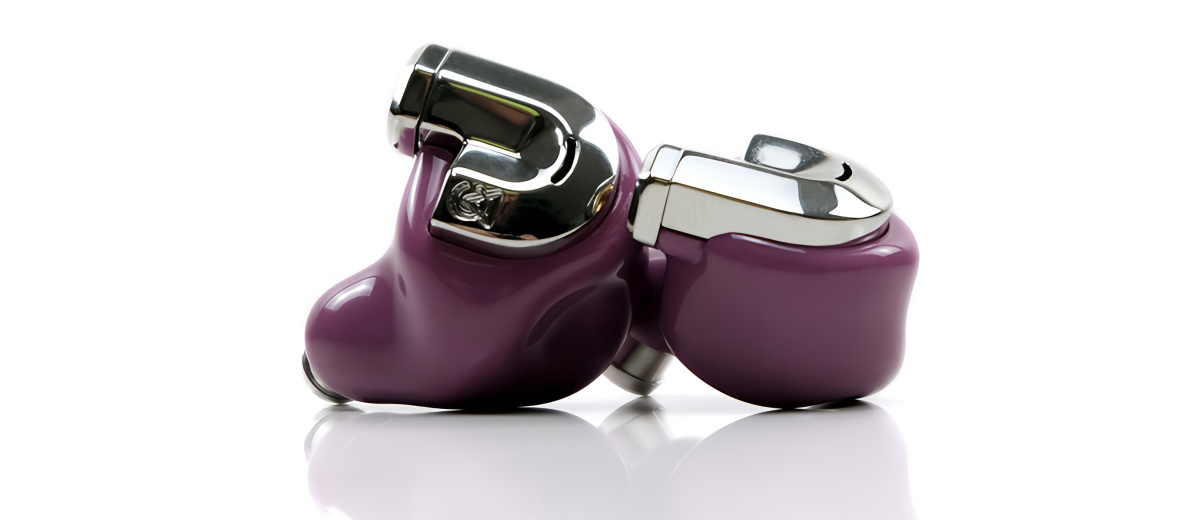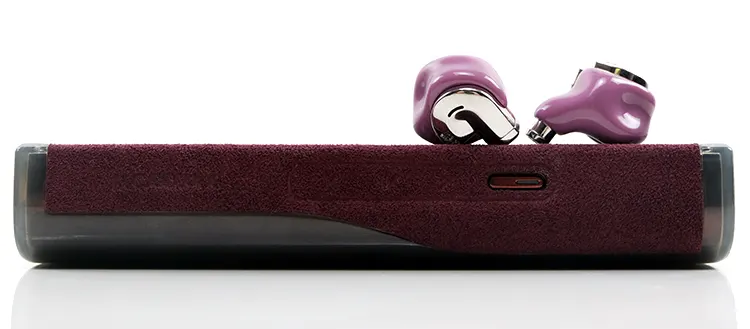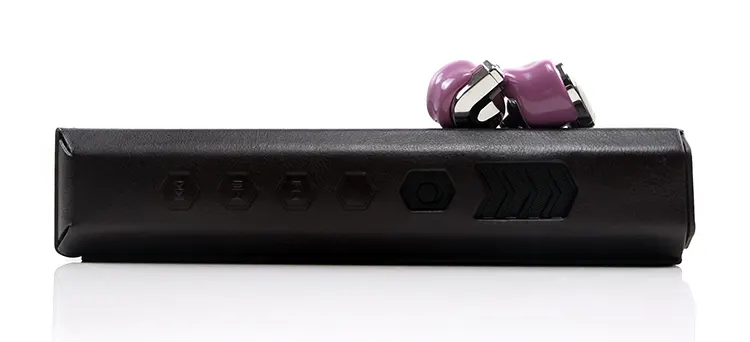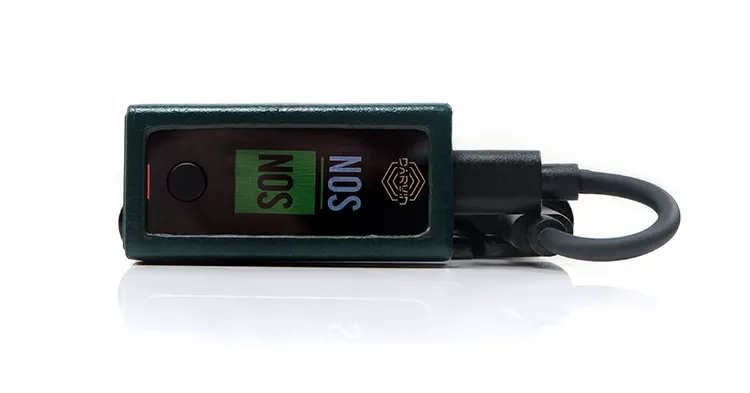Sound Impressions
The following sound impressions of the Campfire Audio Bonneville were completed using a mix of the HiBy FC6 and the R8 II, as well as the FiiO M17 as the main sources in single-ended mode with the stock silicone tips.
Summary
The Bonneville tuning is both boisterous and fun-sounding with a firm eye on delivering some concussive bass bombs when needed. However, it is also a technically skillful performer with an impressively large staging quality and above-average imaging.
CA has tuned the Bonneville curve with emphasis at the extremities and aside from a noticeable midrange 1-2k bump it’s a largely U-shaped performer with impressive power and a light dash of sparkle from the highs.
The overall timbre is slightly warm with some sparkling overtones and perhaps one of CA’s smoothest performers to date.
That top and bottom emphasis does mean the midrange presence can be secondary when the power is to the max. There is an element of ‘bleed’ into the lower mids but surprisingly the clarity and space afforded both vocal and instrument is generally very good.
I have heard more ‘Harman-Centric’ multi-driver monitors with strong bass-heavy tunings suffer from clarity issues despite sounding further forward, this IEM is not one of them.
The combination of that 1-2k bump combined with a less aggressive upper mids and good upper treble energy gives everything a pleasant clean and precise quality for vocals.
More so with the right pairing choice because this IEM is quite easy to drive from both DAP and dongle. A good example is the HiBy FC6 dongle which delivers a beastly low-end on the Bonneville but manages to balance it perfectly with some excellent vocal texture and presence.
Overall, the Bonneville tuning is a cracking fit for modern pop, synthwave, EDM, and some elements of rock and less of a vocal-enthusiasts pick. If you want vocal presence to the fore I would advise looking at the Stellar Horizon instead.
Frequency Response
CA has always created its own path with FR curves and never really slaved that hard to hit the ideal Harman Target. The Bonneville is no exception, which sort of makes it stand out a bit more from the crowd.
The Bonneville has some major emphasis from 20Hz up to 80Hz then gently slides down to 1k and only hits any sort of benchmarked neutral amplitude around 600Hz up to 1k.
You are going to hear a lot of sub-bass presence and power but also a visceral mid-bass punch and a bit of upper-bass bloom. Trifecta fans may be somewhat familiar with this concussive tuning.
From 1-2k you get a bump that reminds me a little of the Ara tuning which has a similar narrow band emphasis.
Lifted for vocal clarity, it does work for the majority of the time. Particularly so with mixed and head vocal tuning with stripped-down R’n’B mixes where there is a more emphasized level of bass to mids separation.
That being said, anything beyond and it loses a bit of forward presence with the upper-mids and lower treble largely south of the Harman with a more laid-back approach. I suspect much of that was to squeeze out any potential brightness from the tweeter tuning which has plenty more energy from 7-10k.
Timbre
The resulting Bonneville timbre is thus a very pleasing mixture of low-end warmth, some light touch contrast and euphony through the mids, and a light sheen from the higher pitching instruments.
The underpinning instrumental fundamental is excellent, as also the snap and impact from its mid-bass punch. It’s probably the most impressive dynamic driver performance from a Campfire Audio IEM outside of the Trifecta.
Yes, there is a bit of bloom in the upper bass and lower mids that give it more of a smoothed-over tonal quality. You will notice it less with modern pop, dance, and R’n’B, which tends to emphasize vocals and bass over lower-mid instrumental complexity, but more so with the likes of a guitar-heavy Metallica recording.
Vocal timbre is natural sounding but more with a light touch to their weight and more contrast compared to richer and more mid-forward competitors such as the 64 Audio U4s. However, is not as neutral sounding as the Stellar Horizon tuning through the mids. There is some enhanced euphony running through the Bonneville veins here.
Percussion presence is pleasant but lacks dominance with more of an ethereal quality to their timbre. The upper treble lift gives them a nice sheen but cymbals and hi-hats are not cutting too much into the general presentation and lack any overt and unpleasant splashiness.
Staging & Dynamics
Excellent staging capability at a macro-level from the Bonneville and also surprisingly wider compared to some of its hybrid competitors at this price point.
You get more depth and power compared to the Stellar Horizon, and improved height and perceived width compared to the likes of the Noble Audio Jade and the 64 Audio U4s. Airy with above-average instrumental separation and clarity for imaging spring to my mind when listening to the Bonneville.
It does lack a bit of midrange focus and can sound a little light in this area for vocal bloom compared to the aforementioned competitors. For example, the Stellar Horizon is much the better performer for midrange micro-detail and focus.
On the flip side, your perceived positioning is further back from the stage, enhancing the grandiose staging perception. Genres that stretch deep and relatively tall benefit from the monitor’s emphasis at both ends of the curve.
Synergy
Efficiency & Sensitivity
The Campfire Audio Bonneville is rated at 29Ω @ 1 kHz for load and requires 14.59 mVrms to reach 94 dB @ 1 kHz for SPL which is CA’s method for measuring SPL.
This methodology is still relatively unique to Campfire and has not been widely adopted so measuring like for like on paper is much easier if it stays in-house and more subjective when up against its nearest competitors.
For example, the Solaris Stellar Horizon has a lighter load of 4.4Ω and requires only a 9.145 mVrms rating to obtain a benchmark of 94 dB SPL @ 1kHz making it more sensitive on paper.
And that pretty much matches my experience when comparing the two with the Bonneville requiring a bit more volume when connected to the HiBy R8 II SE output in a low gain setting. The Bonneville is also a little less sensitive to incremental or small changes in the volume compared to the Stellar Horizon.
For monitors that use the more widely adopted fixed Vrms value and resulting dB/mW levels such as the 64 Audio U4s, (107 dB/mW @ 1kHz), then the Bonneville will subjectively sound the more sensitive of the do when tested from the same R8 II SE output.
For Noble Audio IEM users, where the company generally releases only a snippet of information such as ‘easy to drive’ or less than 35Ω, I can tell you that one of their nearest competitors to the Bonneville, the Jade, is slightly less sensitive also.
However, none of them are a million miles away from each other and the Bonneville in particular, is less sensitive than the Andromeda 2020 and less likely to pick up noise from most modern DAP PO outputs.
DAP Pairings
I tested 3 DAPs alongside the Chord Electronics Mojo 2. They included the FiiO M17, the HiBy R8 II, and the Cayin N7, all in a low gain single-ended output with the operational mode on the Cayin N7 set to Class A and the R8 II version set to Class AB.
If you have a preference for a driving rhythm and stronger low-end dynamics or a clean snap in the mid-bass punch then both the R8 II and the M17 are the better choices.
Both maximized Booneville’s dynamic driver presence with some excellent depth and power. I would give an edge to the R8 II with the slightly blacker background and better dynamic range when the dynamic peaks from the mid-bass punch are at their loudest.
I could also detect more upper treble presence from the R8 II which seems to better suit the Bonneville’s tweeter tuning, giving you more perceived height and a bit more sparkle. The M17 just tailed off a bit more pushing your attention further down to the mids and lows as your main point of focus.
Both the Mojo 2 and the N7 are less ‘racy’ and energetic over the lows with the N7 offering some nice body and warmth but not necessarily having the same snappy drive as the two delta-sigma DAPs.
The Mojo 2 was very clean but more neutral on the bass compared to the other 3 and I am not sure that is what you want from the Bonneville or why you are buying it.
The N7 is your go-to DAP for vocal performances from the Bonneville. The Bonneville is not the most forward-sounding monitor so if you need a better richer vocal delivery the N7 outperforms the open and airy but leaner-sounding mids of the R8 II.
Dongle Pairings
I tested four dongles and I have to say out of the four, the HiBy FC6 is tailor-made for the Bonneville. Its tuning is spot on with the strongest weightiest bass response and the best vocal presence and texture.
The Cayin RU7 has some great vocal texture also but creates a more neutral midrange imaging quality in favor of spreading the soundstage out wider than any other dongle we tested.
If you want refinement then it’s the best choice but I am not sure it captures the ‘spirit’ of the Bonneville tuning in the same manner.
The Cayin RU6 does well for vocal euphony, and of the 4 tested it sounded the most intoxicating for high-pitched female vocals. It is more refined than the FC6 for the mids performance but it’s pillowy on the lows and not as powerful sounding either, something I feel the Bonneville needs to have to sound true to its tuning.
The Questyle M15 was the last of the tested dongles and to be honest, it was a good performer but nothing stood out in terms of wow factor. The vocals had a good balance relative to a punchy controlled bass with some nice treble extension but a narrower soundstage quality.
None of the dongles exhibited any issues driving or produced any concerning hiss though I did find a bit of EMI from the Samsung S23 Ultra creep in now and then.




